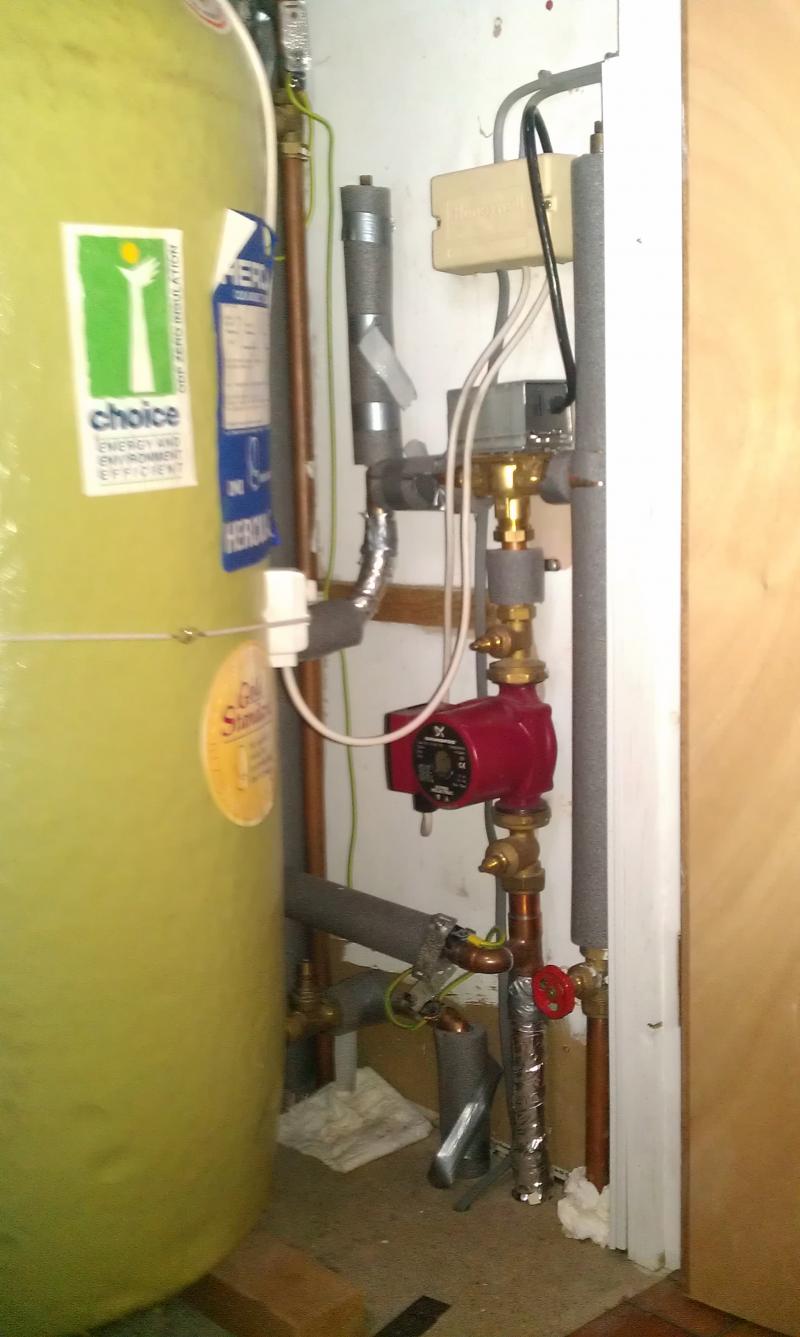Hello
I currently have an open vented Y plan (honeywell) system and the three port valve is not working properly - electrics, motor etc all fine, but when the DHW demand is on, the central heating flow gets hot and some rads warm slightly, depending on how much DHW is needed (i.e. how long its on for). Since we put the heating on yesterday, conversely the DHW gets heating when it doesnt need it, and seems to be causing the hot water to get very hot - not good.
Either way, the valve needs replacement I guess.
As the house (actually converted bungalow) is fairly large, i'd like to zone off the heating at some point: office, airing cupboard, front bedroom, downstairs, downstairs bathroom etc.
For that reason I am considering replacing the 3 port with x2 2 port valves and converting the system to a S Plan. I realise i will need extra controllers etc for the remainder of the conversion.
Looking for feedback on whether this is a good idea or not - am doing it for convenience - current system does do what i want. For example i work from home, would be nice to heat office without heating whole building.
Current setup is:
Ideal mexico super 2 125 boiler (floor stander, 36kw)
699 controller for DHW (heating channel currently unused)
wireless stat for heating
Vented/F&E on 1st floor.
15 rads - some large eg living room is 2.8 metres double vector.
I "get" the plumbing side of it, and accessibility to the 3 port is reasonably ok:
Not sure about the wiring yet, but dont think its anything beyond my capability.
Any opinions appreciated - many thanks.
Mike
I currently have an open vented Y plan (honeywell) system and the three port valve is not working properly - electrics, motor etc all fine, but when the DHW demand is on, the central heating flow gets hot and some rads warm slightly, depending on how much DHW is needed (i.e. how long its on for). Since we put the heating on yesterday, conversely the DHW gets heating when it doesnt need it, and seems to be causing the hot water to get very hot - not good.
Either way, the valve needs replacement I guess.
As the house (actually converted bungalow) is fairly large, i'd like to zone off the heating at some point: office, airing cupboard, front bedroom, downstairs, downstairs bathroom etc.
For that reason I am considering replacing the 3 port with x2 2 port valves and converting the system to a S Plan. I realise i will need extra controllers etc for the remainder of the conversion.
Looking for feedback on whether this is a good idea or not - am doing it for convenience - current system does do what i want. For example i work from home, would be nice to heat office without heating whole building.
Current setup is:
Ideal mexico super 2 125 boiler (floor stander, 36kw)
699 controller for DHW (heating channel currently unused)
wireless stat for heating
Vented/F&E on 1st floor.
15 rads - some large eg living room is 2.8 metres double vector.
I "get" the plumbing side of it, and accessibility to the 3 port is reasonably ok:
Not sure about the wiring yet, but dont think its anything beyond my capability.
Any opinions appreciated - many thanks.
Mike



